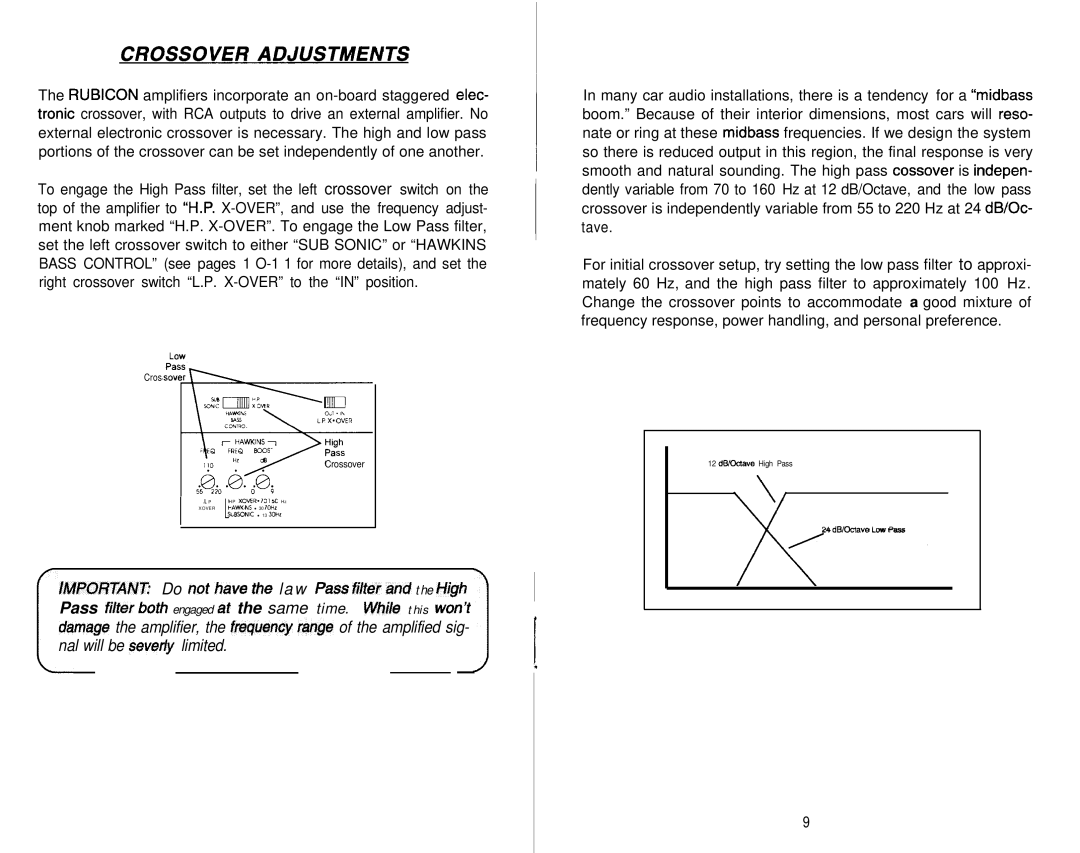
The RUBICON amplifiers incorporate an
To engage the High Pass filter, set the left crossover switch on the top of the amplifier to
Cros
Crossover
I | .L P | H P | 192 Hz |
XOVER | HA’NWS • 30 70Hz | ||
| ’SLBSCNC • 13 | 30Hz | |
blF~R7%N~ Do not have the law Pass filter and the High
Pass filter buth engaged at the same time. While this won’t damage the amplifier, the frquency range of the amplified sig- nal will be severJ’y limited.
.
In many car audio installations, there is a tendency for a “midbass boom.” Because of their interior dimensions, most cars will reso- nate or ring at these midbass frequencies. If we design the system so there is reduced output in this region, the final response is very smooth and natural sounding. The high pass cossover is indepen- dently variable from 70 to 160 Hz at 12 dB/Octave, and the low pass crossover is independently variable from 55 to 220 Hz at 24 dB/Oc- tave.
For initial crossover setup, try setting the low pass filter to approxi- mately 60 Hz, and the high pass filter to approximately 100 Hz. Change the crossover points to accommodate a good mixture of frequency response, power handling, and personal preference.
12 d6Dctave High Pass
24 dB/Octave Low Pass
9
